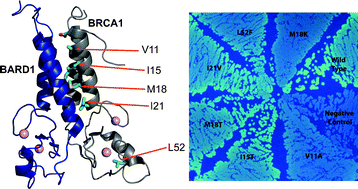Re-engineering a split-GFP reassembly screen to examine RING-domain interactions between BARD1 and BRCA1 mutants observed in cancer patients†
Abstract
Identification of

* Corresponding authors
a
Departments of Chemistry and Biochemistry, The Ohio State University, 100 W. 18th Ave., Columbus, USA
E-mail:
magliery@chemistry.ohio-state.edu
Fax: +1 (614) 292-1685
Tel: +1 (614) 247-8425
Identification of

 Please wait while we load your content...
Something went wrong. Try again?
Please wait while we load your content...
Something went wrong. Try again?
M. Sarkar and T. J. Magliery, Mol. BioSyst., 2008, 4, 599 DOI: 10.1039/B802481B
To request permission to reproduce material from this article, please go to the Copyright Clearance Center request page.
If you are an author contributing to an RSC publication, you do not need to request permission provided correct acknowledgement is given.
If you are the author of this article, you do not need to request permission to reproduce figures and diagrams provided correct acknowledgement is given. If you want to reproduce the whole article in a third-party publication (excluding your thesis/dissertation for which permission is not required) please go to the Copyright Clearance Center request page.
Read more about how to correctly acknowledge RSC content.
 Fetching data from CrossRef.
Fetching data from CrossRef.
This may take some time to load.
Loading related content
